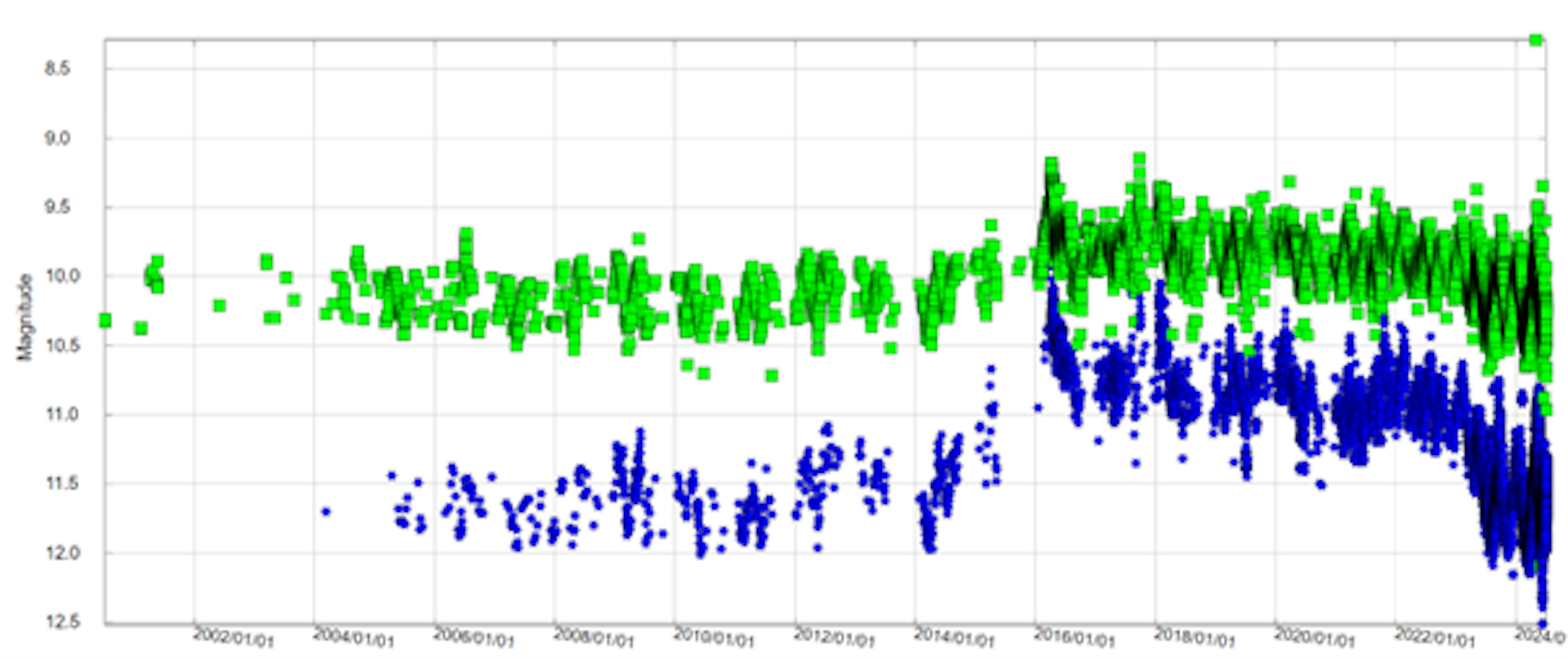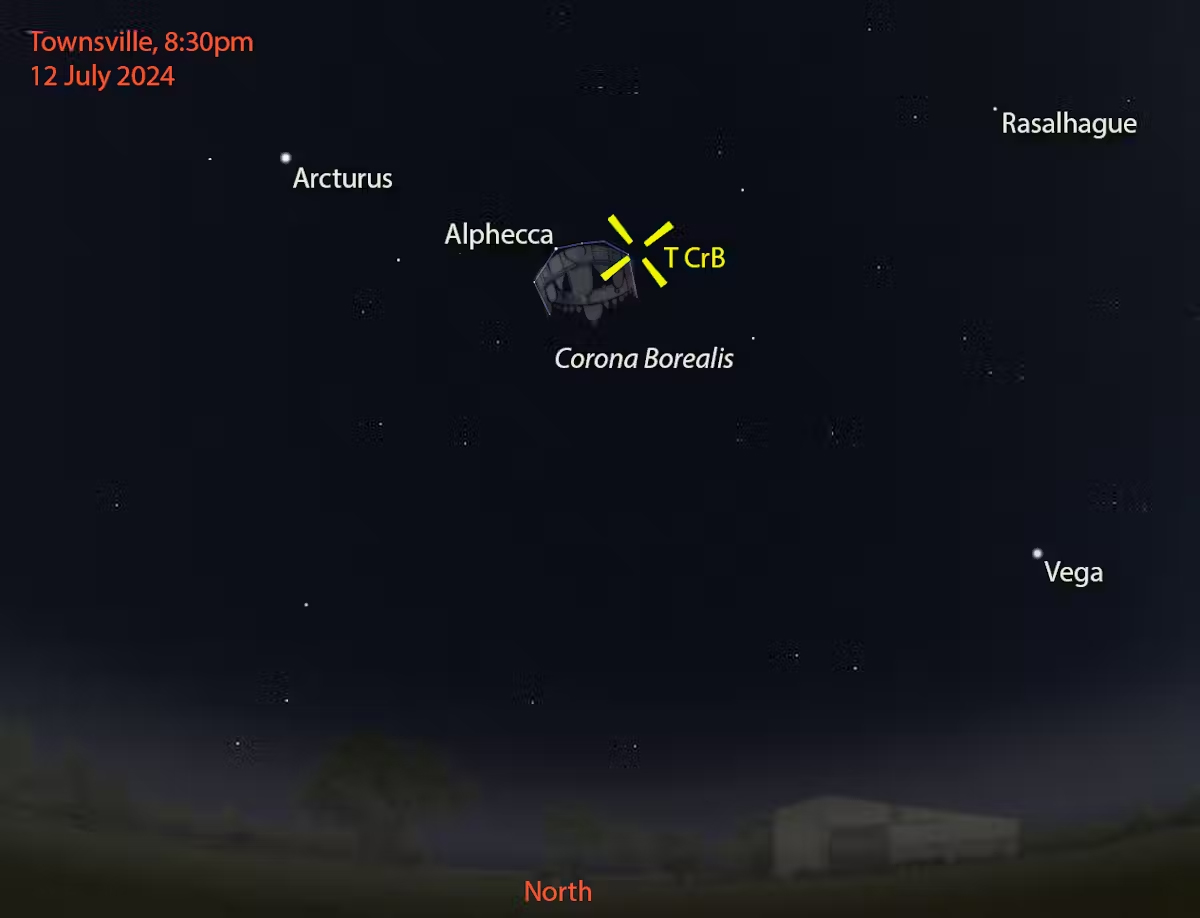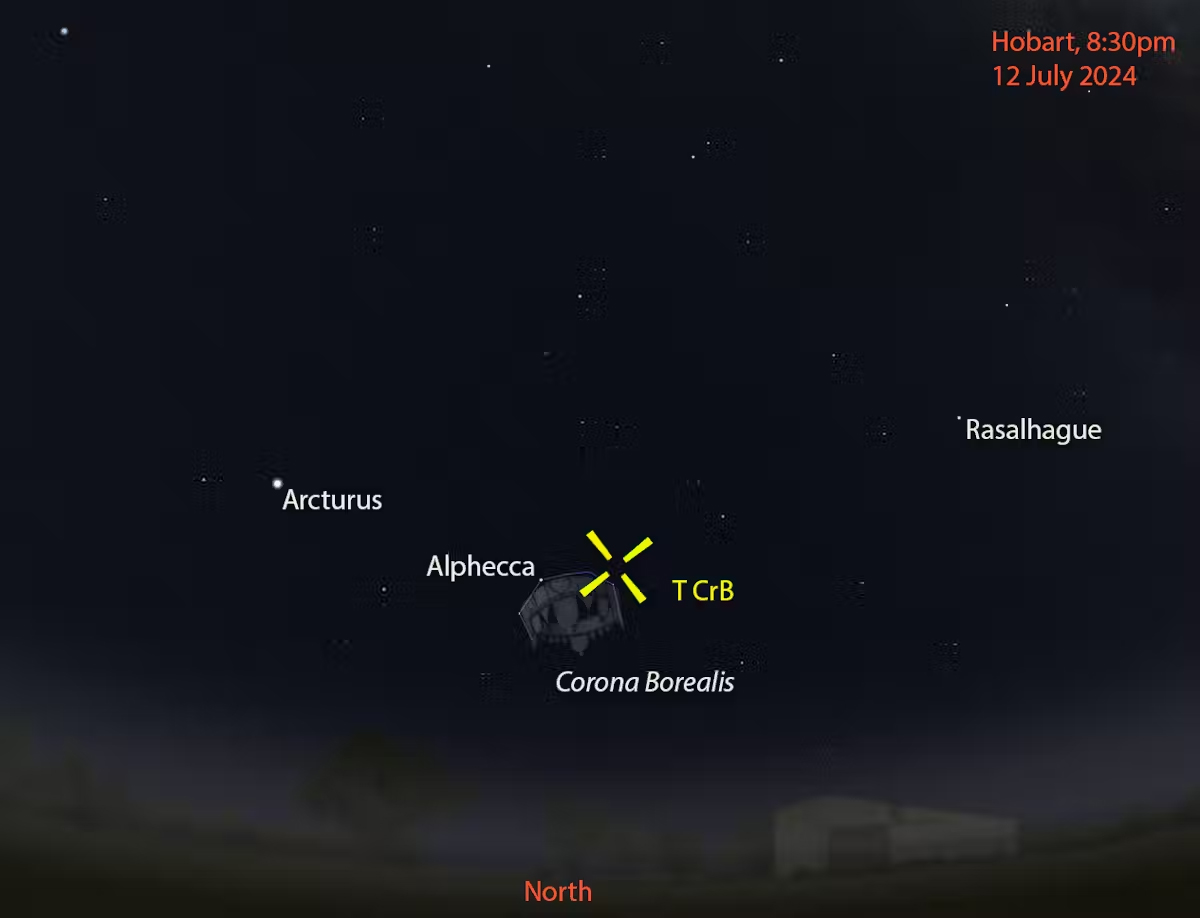This evening a “new star,” or nova, will appear in the night sky. Although it won’t set the sky ablaze, it will be a special opportunity to observe a rare phenomenon that is usually difficult to predict in advance.
The star in question is T Corona Borealis (TCrB(pronounced “T Cor Bor”). North CrownIt will be prominent in the Northern Hemisphere, but will also be visible in the skies north of Australia and New Zealand over the next few months.
Located 3,000 light years away, T CrB is too faint to see most of the time, but it erupts brightly about once every 80 years.
Although it appears as if a new star has suddenly appeared, it doesn’t last long – after just a few nights it quickly fades and disappears into the darkness again.
frameborder=”0″ allow=”Accelerometer; Autoplay; Clipboard writing; Encrypted media; Gyroscope; Picture-in-picture; Web sharing” referrerpolicy=”strict-origin-when-cross-origin” allowfullscreen>
Explosion of Life
At the peak of their lives, the stars Nuclear fusion These reactions take place deep within the core of a star, most commonly converting hydrogen into helium, producing enough energy to keep the star stable and shining for billions of years.
However, T CrB is past its prime and is currently White dwarfThe nuclear explosions within it subsided, and gravity began to compress the dead star dramatically.
T CrB also has a companion star, a red giant, that swells as it ages. The white dwarf absorbs the gas from the swelled red giant, forming what is called an accretion disk around the dead star.
Material continues to accumulate on a star already compressed to its limits, forcing a continuous rise in pressure and temperature. Conditions become so extreme that they mimic conditions that would once have existed inside the star’s core: its surface burns up in runaway thermonuclear reactions.
When this happens, the released energy causes T CrB to shine 1,500 times brighter than normal. On Earth, the star will briefly appear in the night sky. This dramatic reset can cause the star to expel gases and the cycle to start again.
How do you know when the deadline is?
T CrB is the brightest of the rare classes. Re-emerging Nova It is a phenomenon that repeats itself within 100 years, allowing astronomers to detect its cyclical nature.
There are currently only 10 known recurrent novae, but it is possible that many more are recurring, but on much longer timescales that are less easy to track.
The oldest recorded eruption of T CrB is from 1217. Medieval monastic chroniclesIt’s remarkable that astronomers have become able to predict its eruption with great accuracy, so long as the nova follows a regular pattern.
The exact same features were seen in the star’s two most recent outbursts, in 1866 and 1946. About 10 years before the outbursts, T CrB experienced a small increase in brightness (called a luminous state), followed by a short period of fading about a year before the outburst.
T CrB alarmed astronomers by reaching a peak in 2015 and observing a pre-eruption dip in March 2023. The causes of these phenomena are only part of the current mystery surrounding T CrB.

How can I watch it?
Start stargazing now! It’s a good idea to get used to it. Corona Borealis We’ll leave it as is so we can enjoy the full impact of the “new” star.
Corona Borealis is currently in the best position to observe ( Meridian crossing) will be visible across Australia and Aotearoa from around 8:30pm to 9pm local time. The further north you go, the higher the constellation will appear in the sky.

The new star is expected to be fairly bright (magnitude 2.5), and ImaiDelta Crucis)teeth, Southern CrossThis means it’s easy to find from around town if you know where to look.

There isn’t much time
Once it’s gone, it won’t last long — it will only be at full brightness for a few hours. Within a week, T CrB will have faded and will be invisible without binoculars.
It will almost certainly be amateur astronomers who will inform the professional community of the exact moment of T CrB’s explosion.
These dedicated and knowledgeable people regularly monitor the stars from their own backyards, filling a vital gap in night sky observations, just in case something goes wrong.
American Variable Star Observatory (Australia) has submitted over 270,000 observations of T CrB alone. Amateur astronomers are working together here and around the world to continually monitor T CrB for the first signs of an eruption.
Hopefully, the nova will erupt by October as expected, because then Corona Borealis will disappear from the Southern Hemisphere’s evening sky.![]()
Tanya HillSenior Curator of Astronomy, Museum Victoria, Honorary Fellow, University of Melbourne, Victoria Museum Institute and Amanda CaracasAssociate Professor, Department of Physics and Astronomy Monash University
This article is reprinted from conversation Published under a Creative Commons license. Original Article.


